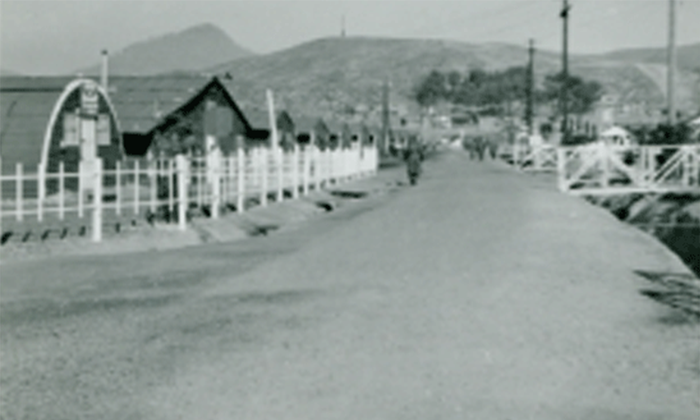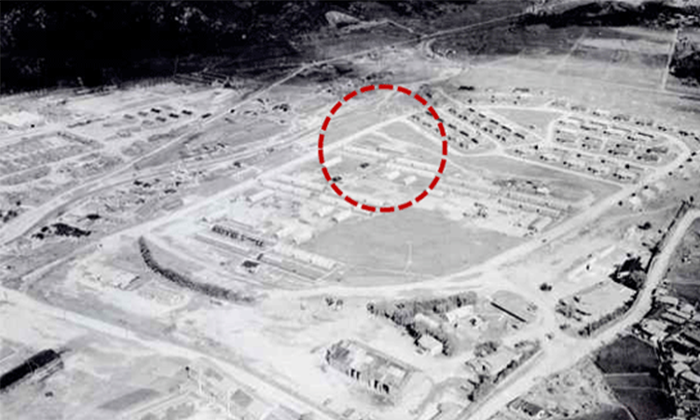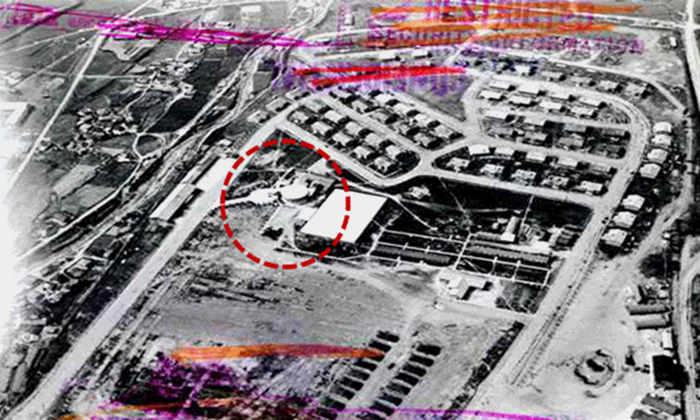Photograph taken from Quonset Hut T226, facing toward G4
(now the National Gugak Center)
The lives of residents in the Hialeah area
- Japanese colonial period
- U.S. military presence period
- The lives of residents in the Hialeah area
- Site Reclamation Period
The lives of residents in Camp Hialeah
Following the end of the Korean War, the U.S. Army headquarters relocated to Yongsan Base in Seoul; however, Camp Hialeah in Busan continued to serve a critical military function as a logistics and supply hub for U.S. forces. Geopolitically, its importance was heightened by its proximity to the port, a key gateway for the movement of troops and military supplies. As such, Camp Hialeah played a vital role not only in supporting U.S. military operations in Korea and ensuring regional security in East Asia, but also in shaping the economic and cultural landscape of Busan through its long-standing presence and strategic location.
Considering that the Korea Racing Association held its Autumn Horse Racing Meet at Yeonji 2nd Racetrack in the fall of 1949, it is likely that the newly constructed “Officials’ Club” at the former Hialeah site was temporarily used as a bet issuing counter. Over time, it came to be known as the bet issuing counter. On the other hand, since the 1950s, public access to the area has been largely restricted, making it more likely that local memory recalls the site as a bookmaker’s booth rather than as an officers’ club.
-

-

Seomyeon Racetrack 1948.9
-

Seomyeon Racetrack 1950.8
-

Main Entrance G1 (now Sungji Elementary School)